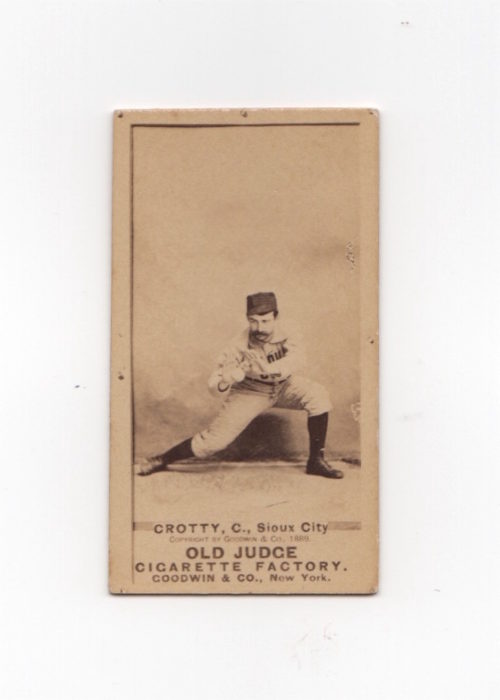Special series scores the game from 1858 to 1875
By John Liepa

This is one of many “Old Judge” cards depicting Sioux City players from 1887 to 1890 by the Goodwin & Co. tobacco firm from Richmond, Va. Des Moines and Sioux City were part of the American Association.
“There is nothing left for me to do but go and see General Grant, and I would rather die a thousand deaths.”
With those words, Gen. Robert E. Lee, on April 9, 1865, sent word to meet with Gen. Ulysses S. Grant at the home of Wilmer McLean in the village of Appomattox Court House, Va., thus, ending America’s Civil War. Iowa’s contribution to the Union cause was staggering. Out of an approximate population of 675,000 in 1860, nearly 72,000 Iowans served; 3,540 were killed or mortally wounded; another 8,498 died of disease; and 515 died in prison camps.
For most Iowans, the term of enlistment was for three years and most of their fighting took place in the Lower Mississippi Valley, the Carolinas and Georgia. Many were involved in some of the bloodiest battles in the Western Theater, including Pea Ridge, Ark., Shiloh, Tenn., and Vicksburg, Miss. The lulls or recovery times between battles often lasted weeks or months. Civil War camps, even prison camps, were where many Iowans were first introduced to the game of baseball. Camp life, as told through thousands of letters sent home to loved ones, included drilling and training; troop morale; raucous amusement like music, wrestling and gambling; and being introduced to the finer points of a newly discovered pastime, baseball.
During the war, officers were either elected by the men, or were political appointments, so it is not surprising that they often were professionals (i.e. doctors, lawyers, college graduates, etc.) or businessmen — all whom were more likely to have traveled to the cities of the northeast and were familiar with baseball. When the war ended and Iowa soldiers returned to their hometowns and farms, they took with them rudimentary knowledge of the game, as well as “war-taught” traits such as teamwork, discipline, order and management skills, all of which could easily help in creating successful baseball clubs and teams.
Although the war’s end would serve as a powerful catalyst for the spread of baseball, the game had arrived in Iowa three years prior to its start. The earliest known account of an Iowa baseball club/team being formed was on May 28, 1858 — the “Pastime Base-Ball Club No. 2” of Davenport. Like so much of Iowa’s “pattern of development,” from southeast to northwest along the river valleys, baseball’s spread before and during the war was slow and showed up in Davenport, Dubuque and Keokuk.
It initially was still competing with horse racing, wrestling and especially cricket, as favorite pastimes. At the war’s end, the priority of returning Iowa soldiers was to heal and resume a sense of normalcy, which meant returning to, or starting a family and finding a job, or farm work.
TO READ MORE ABOUT THIS STORY AND OTHER FASCINATING STORIES ABOUT IOWA HISTORY, subscribe to Iowa History Journal. You can also purchase back issues at the store.
